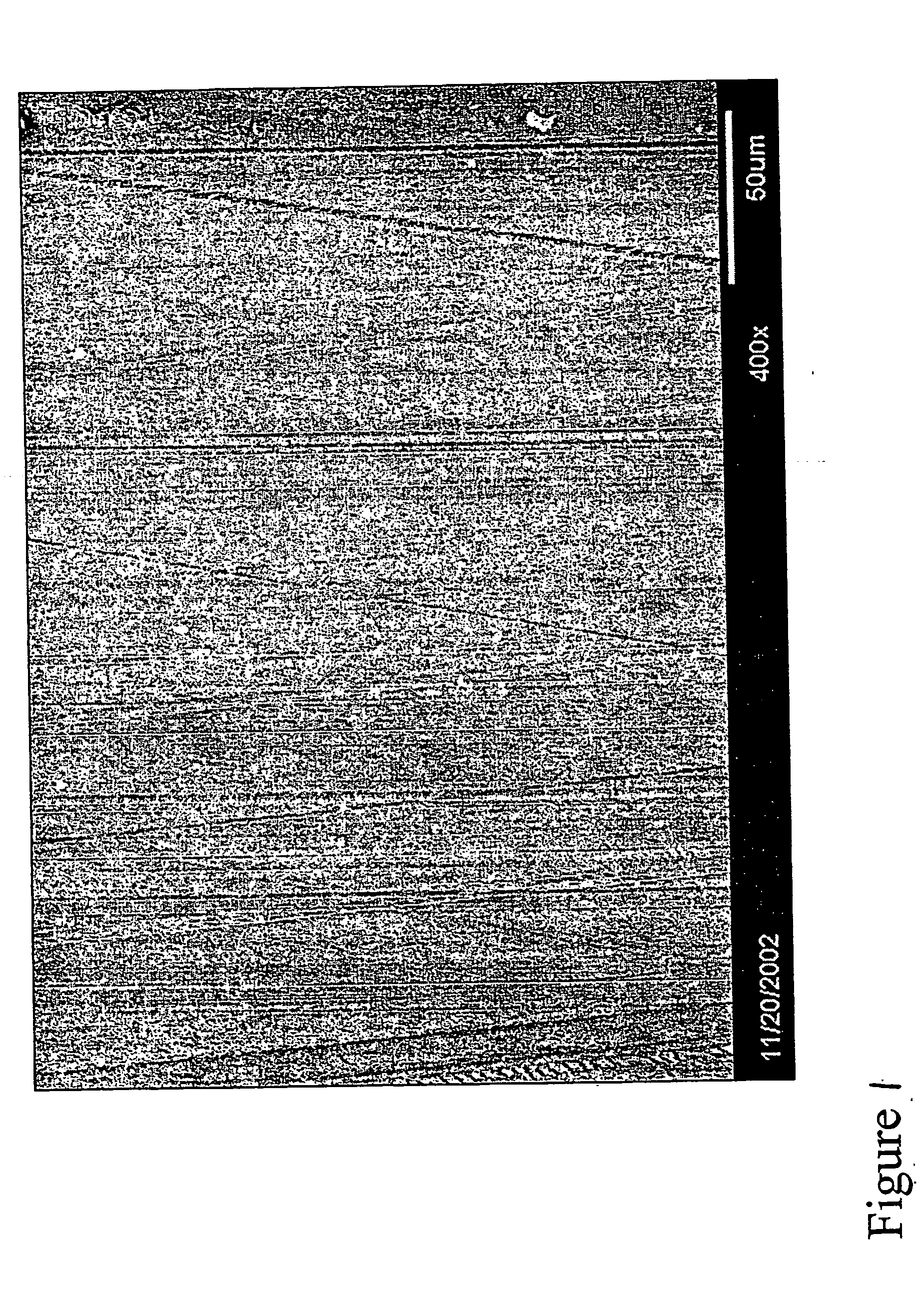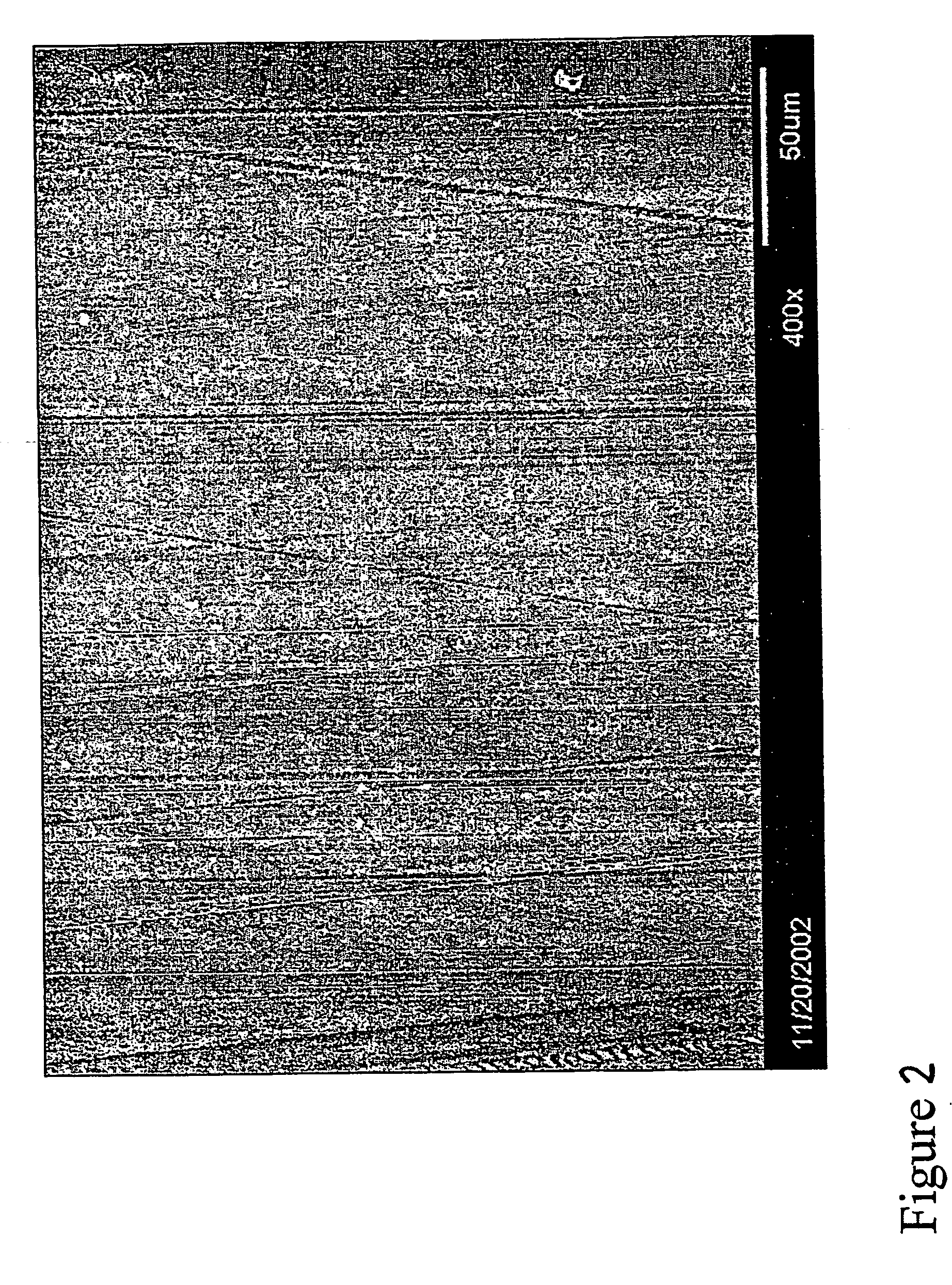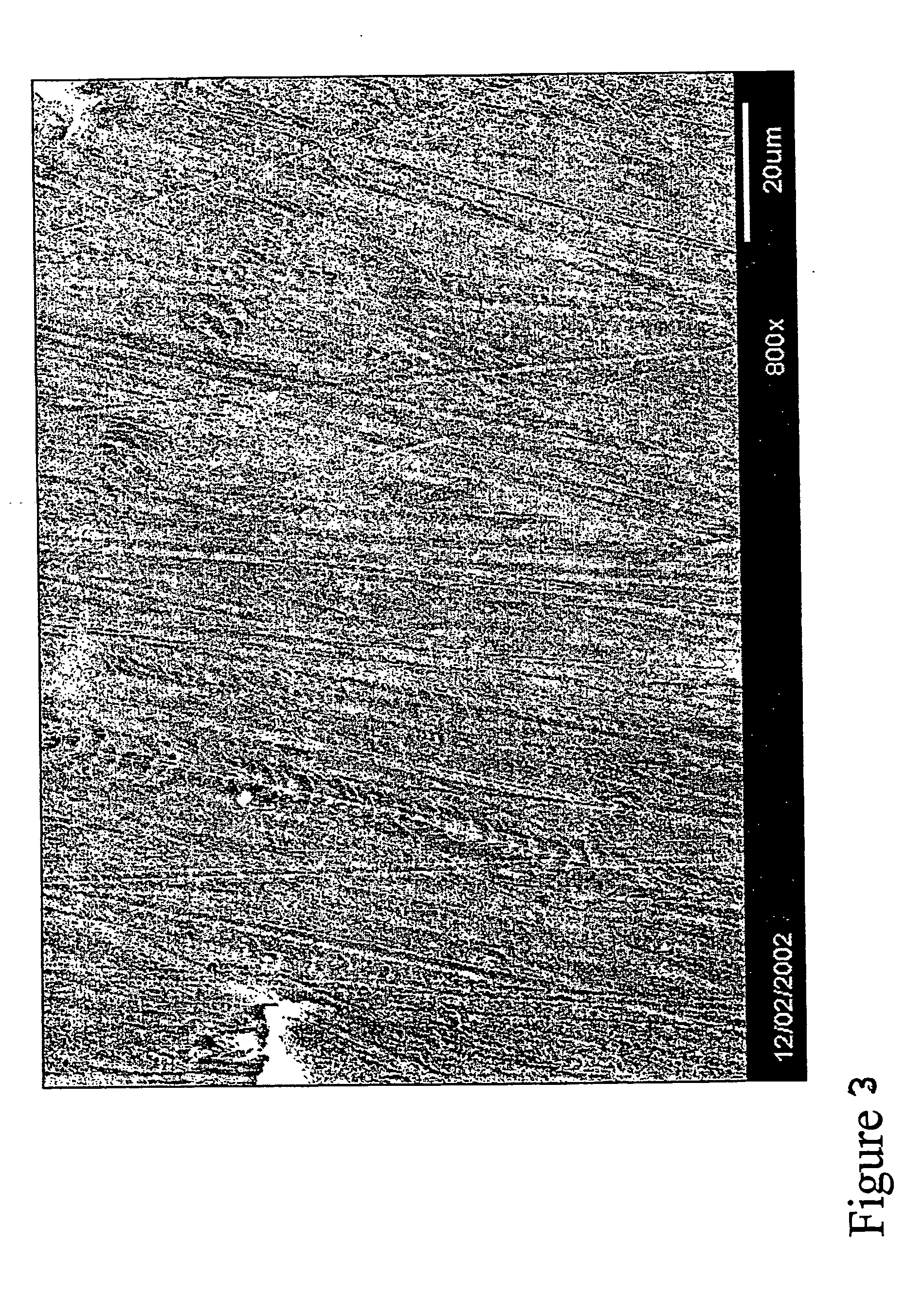Jettable compositions
- Summary
- Abstract
- Description
- Claims
- Application Information
AI Technical Summary
Benefits of technology
Problems solved by technology
Method used
Image
Examples
examples 9-12
3D Printing Application Using Powders as Receiving Substrates
[0142] Mechanical test specimens were built using the following procedure. [0143] 1. A layer of the appropriate powder (500 μm) was spread on a metal substrate. [0144] 2. The appropriate resin was jetted onto the powder using a Microfab single jet head heated to 70° C., in a pattern consisting of lines spaced laterally by 250 μm, at a density given below. The pattern was then cured by exposure to TV light (4 W, WVA, 120 mJ / cm2) [0145] 3. A further layer of powder (300 μm) was spread over the previous layer, and step 2 repeated. [0146] 4. Step 4 was repeated 3 times. The article was removed from the free powder, and tensile properties were measured using Stable Micro Systems TA-HDi Texture Analyser, test speed 0.08 mm / s, grip distance 55 mm.
[0147] Four tests were carried out (Examples 9 to 12) and the parameters of the test and the properties of the resulting samples are shown in Table 5.
TABLE 5TensileElongationDroplets...
example 13
Jettable Composition:
[0153] The following components were mixed by tumbling in a glass bottle for 2 hours, under yellow light conditions.
UVR610550gUVR600035gCAP30110gUVI 69765gStabilizer BDMA0.1g
[0154] The liquid resin had following properties: [0155] Viscosity (Brookfield viscometer / rate 100 rpm): 70 mPas / 25° C.; 8 mPas / 70° C. [0156] Surface tension: 42 dynes / cm
[0157] The above UV curable composition was deposited on a test substrate with a specific pattern using a single piezoelectric jet printer head from Microfab Technologies Inc, Plano, Tex., USA. The printhead was heated to 70° C. under the following parameters: [0158] Printhead Scan rate was 20 mm / second [0159] The drop density was 150 droplets / mm with a line space of 0.25 mm
example 14
[0160] Using the jettable toughened, stabilised composition of Example 13, two overlapping lines of droplets were deposited as set out in Example 13 onto a polypropylene carrier sheet at a drop density of 150 droplets / mm with a line space of 0.25 mm and UV cured under a 4 W UVA lamp with a curing energy of 120 mJ / cm2. Where a two layer deposit is formed, the second layer is deposited on the first layer and cured under identical conditions.
[0161] A one-layer specimen and a two-layer specimen were examined using the SIEM method (Speckle Interferometry with Electron Microscopy). SIEM is a micro / nano-scale technique that is able to perform full field displacement mapping over a region of only a few microns in diameter. First, a random speckle pattern of nanoscale gold particles, which serve as displacement gauges, is deposited on a specimen surface. The specimen is placed under a load and the nanospeckle patterns before and after deformation of the specimen as a result of the load are ...
PUM
| Property | Measurement | Unit |
|---|---|---|
| Temperature | aaaaa | aaaaa |
| Temperature | aaaaa | aaaaa |
| Temperature | aaaaa | aaaaa |
Abstract
Description
Claims
Application Information
 Login to View More
Login to View More - R&D
- Intellectual Property
- Life Sciences
- Materials
- Tech Scout
- Unparalleled Data Quality
- Higher Quality Content
- 60% Fewer Hallucinations
Browse by: Latest US Patents, China's latest patents, Technical Efficacy Thesaurus, Application Domain, Technology Topic, Popular Technical Reports.
© 2025 PatSnap. All rights reserved.Legal|Privacy policy|Modern Slavery Act Transparency Statement|Sitemap|About US| Contact US: help@patsnap.com



